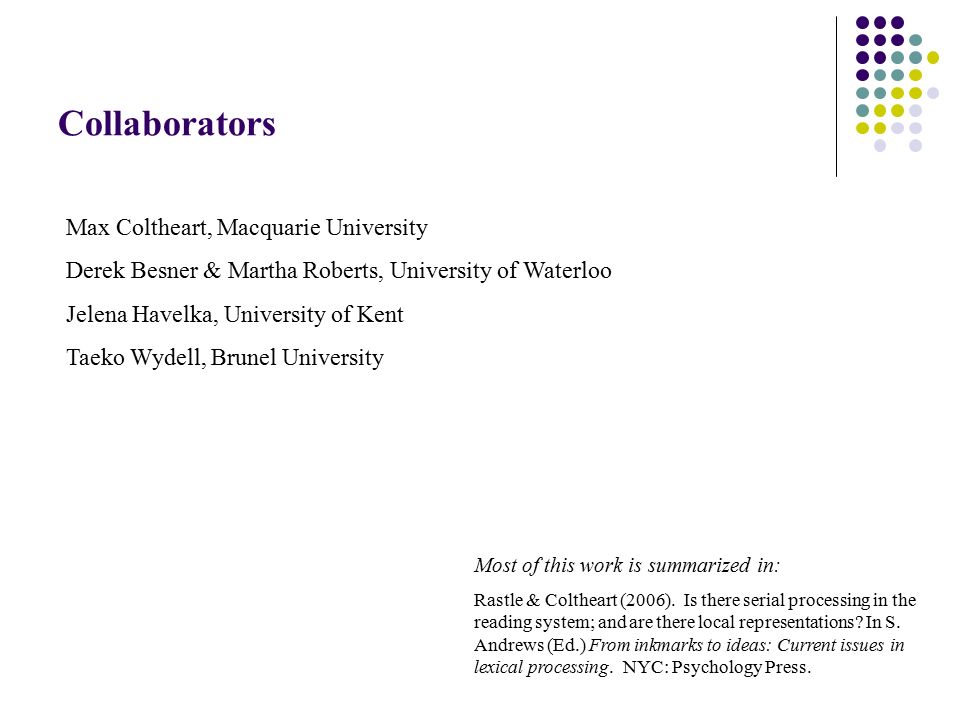Serial Processing Psychology
What's the difference between these 2 types of processing? -SERIAL Processing & --PARALLEL Processing Which one is for Searching for 1 SINGLE FEATURE AND WHICH ONE IS FOR SEARCHING FOR 2 FEATURES I'm confused what the main differnece is. What I do understand is that Parallel is for multiple. What's the difference between these 2 types of processing? -SERIAL Processing & --PARALLEL Processing Which one is for Searching for 1 SINGLE FEATURE AND WHICH ONE IS FOR SEARCHING FOR 2 FEATURES I'm confused what the main differnece is. What I do understand is that Parallel is for multiple processes at a time and Serial has a lot of distractors, which makes it more complex and (probably slower??) Thankyou so much if you could explain these too me, I really appreciate it! Best Answer: Serial = doing one thing at a time, parallel = as you said, doing multiple things at the same time.
In visual search stuff, both serial and parallel are used to describe performance in search tasks with lots of distractors. Boulter Camry 2 Boiler Manual Downloads. The idea is that with a parallel search, the time you take to find the target doesn't depend on how many things are there.
Introduction To Mythology Thury Ebook Store more. A number of important models of information processing depend on whether processing is serial. Parallel Processing. Experimental psychology.

If I ask you to find a red dot amongst black dots, you won't be any slower if there are 20 dots overall vs if there are 5, because you basically processes them all at once. If its distinguished by a single feature (though it doesn't work for all feature types), it 'pops out', a term used a lot in the literature. Serial processing means you have to check each item one at a time. If I ask you to find a letter 'i' amongst a bunch of letter 'j's for example, the time it takes you to do it will increase if there are 20 as opposed to if there are 5 (its usually pretty linear, e.g.
1 distractor takes you 1 sec, 2 takes 2 sec, 3 takes 3 sec etc.). This is usually associated with 2 features, as you have to take the time to reject partial matches (e.g. If you're looking for a red square amongst red and black circles, black circles are obviously not what you're looking for, but you might need to check the red circles). There are other things which need to be done in parallel though (I've used a search for a square with a gap in the left/right sides amongst squares with a gap on the top/bottom), it depends how similar the distractors are to the target. While the other researcher is right about what serial and parallel processes are, what you described are related but actually separate concepts, specifically Feature Search, for the first one, and Conjunction Search for the second. The difference is simple - all you have to remember is that 'feature search' is rather literal. It's a search which examines for a single differentiating property (feature) from any distracting stimulus that differ only by that single property, such as looking for a triangle among circles.